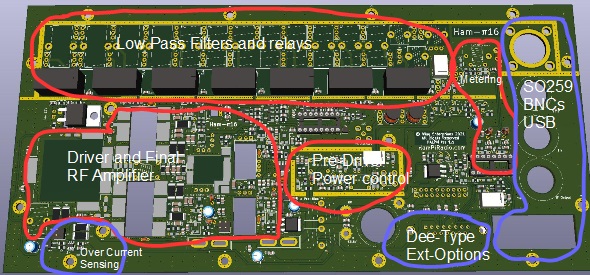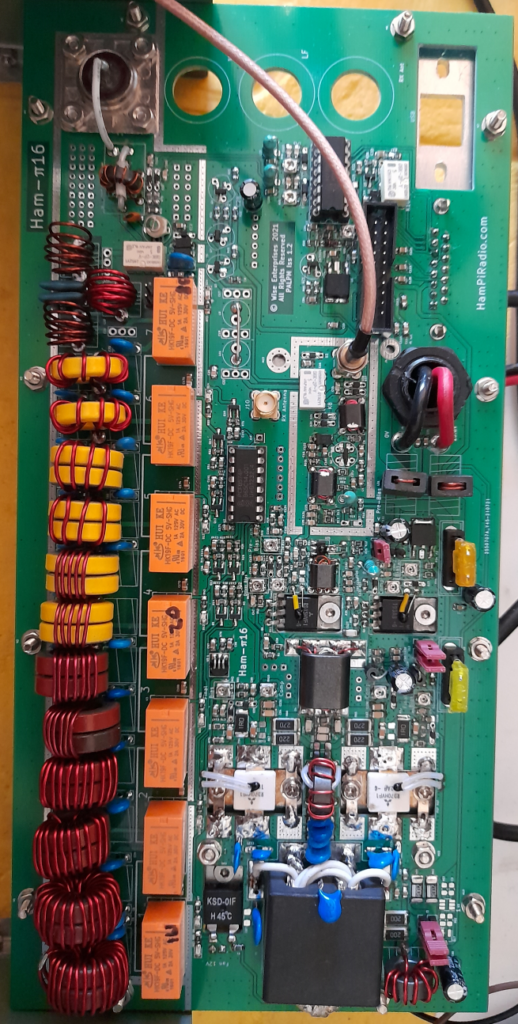
The PA board consists the following:
- 100W PA for 1.8 to 75mHz (all HF + 6mtrs and 4 mtrs. 6m & 4M have less power)
- Robust finals using the RD70HVF1 finals and RD15HVF1 drivers, both push-pull
- Power control down to near zero watts
- 7 x Low Pass Filters 160m to 4m bands
- Each LPF has an LED to identify which LPF is selected (useful when testing…)
- LPF bypass link (for testing the PA)
- Full break-in RX-TX-RX switching so that the receiver is on in-between CW keying.
- Metering detection, Forward power, Reverse power
- Heat-sink temperature and Supply voltage detection. All for display on the front panel display.
- Temperature compensation on all PA stages.
- Fused supply protection, and over current and PA limiting to save damage in case of error
- A 15 pin Dee type connector to the rear to provide for external control of a Linear Amplifier, and other accessories
- Temperature switch and fan control
- This PCB is designed to fit on the rear 3mm Aluminium panel which forms the heat sink (See photos)
This internal PA works for all HF bands 1.8 to 74MHZ. For LF bands, and 2M VHF bands, an external (To be developed) module/s are needed. The current provision is made in the HamPi for this in the BPF and VFO.

![]()